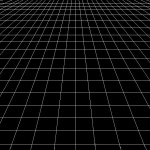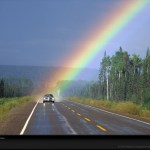atoms
“It surprises me how disinterested we are today about things like physics, space, the universe and philosophy of our existence, our purpose, our final destination. It’s a crazy world out there. Be curious.” -Stephen Hawking
One of the most existential questions humanity has ever asked is the question of our origins: where do I come from? Inspired by Ben Kilminster's writings, here's the entire history of the Universe -- that's led up to the existence of you -- in just 10 sentences*.
Image credit: Amber Stuver of http://www.livingligo.org/.
1.) At some point in the…
“We live in an atmosphere of shame. We are ashamed of everything that is real about us; ashamed of ourselves, of our relatives, of our incomes, of our accents, of our opinions, of our experience, just as we are ashamed of our naked skins.” -George Bernard Shaw
All that is real about ourselves is nothing to be ashamed about; quite to the contrary, it's something to be eminently thankful for. This very existence is all we have, and while it's minuscule compared to the entire Universe, it required the entire Universe to bring us to the point where it's possible for us to exist.
What do…
"It took less than an hour to make the atoms, a few hundred million years to make the stars and planets, but five billion years to make man!" -George Gamow
Earlier today, a video (from last month) was released where one of the members of the US House of Representative -- a member who sits on the House Committee for Science, Space and Technology -- proudly proclaimed the following:
"All that stuff I was taught about evolution, embryology, the big bang theory; all of that is lies straight from the pit of hell." -Paul Broun
Well, if the Big Bang is a lie from the pit of hell, then the…
"The colors of a rainbow so pretty in the sky.
Are also on the faces of people going by." -Louis Armstrong
It's no secret that white light is the light that we see when all the colors shine together and are seen at once. This has been known for over 400 years, when Isaac Newton demonstrated that white light could be broken up into all the known colors by dispersing it through a prism.
Image credit: Adam Hart-Davis.
All that we're doing is breaking white light -- in this case, sunlight -- up into all of its component colors. This can be done artificially (such as by configuring a prism) or…
I have to admit, I'm writing this one up partly because it lets me use the title reference. It's a cool little paper, though, demonstrating the lengths that physicists will go to in pursuit of precision measurements.
I'm just going to pretend I didn't see that dorky post title, and ask what this is about. Well, it's about the trapping and laser cooling of thorium ions. They managed to load thorium ions into an ion trap, and use lasers to lower their temperature into the millikelvin range. At such low temperatures, the ions in the trap "crystallize."
So, they've demonstrated that if you get…
Last week's series of posts on the hardware needed for laser cooling and trapping experiments dealt specifically with laser-cooling type experiments. It's possible, though, to make cold atoms without using laser cooling, using a number of techniques I described in two posts back in January. Those didn't go into the hardware required, though, so what's different about those techniques in terms of the gear?
Less than you might think. In fact, most of the labs that do these experiments use exactly the same sorts of equipment that laser coolers do. Including some lasers.
It's not all of them, but…
Over in the reader request thread, Richard asks for experimental details:
I'd be interested in (probably a series) of posts on how people practically actually do cold atoms experiments because I don't really know.
I needed to take some new publicity photos of the lab anyway, so this is a good excuse to bust out some image-heavy posts-- lab porn, if you will. There are a lot of different components that go into making a cold-atom experiment, so we'll break this down by subsystems, starting with the most photogenic of them, the vacuum system:
(Click on that for a much bigger version.)
This…
Last week, Dmitry Budker's group at Berkeley published a paper in Physical Review Letters (also free on the arxiv) with the somewhat drab title "Spectroscopic Test of Bose-Einsten Statistics for Photons." Honestly, I probably wouldn't've noticed it, even though this is the sort of precision AMO test of physics that I love, had it not been for the awesome press release Berkeley put together, and this image in particular (grabbed with its caption):
This is a nifty paper, and deserves a little explanation in Q&A format:
Is this another New Scientist style "Einstein was wrong" paper? No. If…
The National Science Board made a deeply regrettable decision to omit questions on evolution and the Big Bang from the Science and Engineering Indicators report for 2010. As you might expect, this has stirred up some controversy.
I wasn't surprised to learn this, as I had already noticed the omission a couple of months ago, when I updated the slides for my talk on public communication of science-- the figure showing survey data in the current talk doesn't include those questions, while the original version has them in there. I noticed it, and thought it was a little odd, but it had no effect…
What's the application? Using lasers to reduce the speed of a sample of atoms, thereby reducing their temperature to a tiny fraction of a degree above absolute zero.
What problem(s) is it the solution to? 1) "How can I make this sample of atoms move slowly enough to measure their properties very accurately?" 2) "How can I make this sample of atoms move slowly enough for their quantum wave-like character to become apparent?"
How does it work? I've written about laser cooling before, but the nickel version of the explanation is this: You can think of a beam of light as being made up of photons…
tags: atoms, teaching, pets, dogs, chemistry, streaming video
A crack team of PhD-trained golden retrievers illustrate the structure of atoms -- the particles that make up everything around you. They also show how atoms are weirder than you might think.
tags: nature, cosmos, streaming video
This amazing video takes us on a fantastic journey from the outer universe down to the earth, then into a leaf and on into submolecular structures, for a look at quarks that make up atoms.



